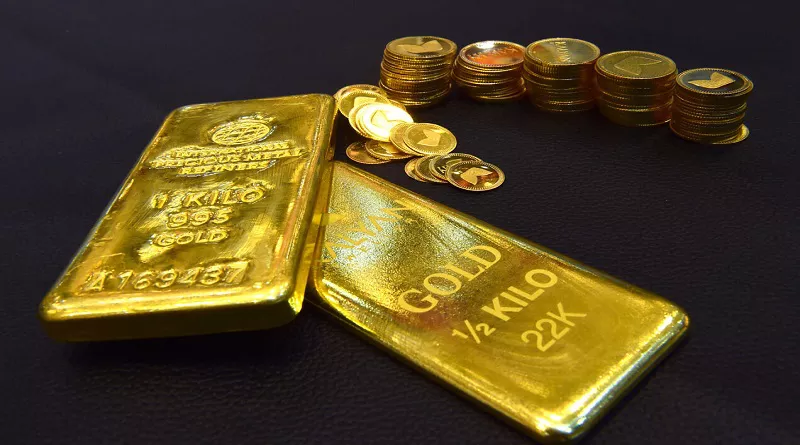Gold has been a timeless and reliable store of value, making it an attractive investment option for many. When considering an investment in gold, it’s crucial to make informed decisions to maximize potential returns and manage risks effectively. One way to achieve this is by analyzing economic indicators. Economic indicators provide valuable insights into the state of the economy and can help investors gauge the future direction of gold prices. In this article, we will explore how you can use economic indicators to make informed gold investment decisions.
I. Understanding Economic Indicators
Economic indicators are statistical data points that provide information about the economic performance of a country or region. These indicators can cover a wide range of economic aspects, including inflation, employment, manufacturing activity, consumer sentiment, and more. Investors use economic indicators to assess the overall health and direction of an economy, which, in turn, can influence their investment decisions, including those related to gold.
II. Relevant Economic Indicators for Gold Investors
1. Inflation Rate
Inflation measures the rate at which the general price level of goods and services rises, eroding the purchasing power of a currency. Gold is often considered a hedge against inflation because its value tends to rise when inflation is high. Monitoring inflation indicators, such as the Consumer Price Index (CPI) or Producer Price Index (PPI), can provide insights into the potential direction of gold prices.
2. Interest Rates
Interest rates set by central banks play a significant role in influencing gold prices. When interest rates are low, the opportunity cost of holding non-interest-bearing assets like gold is lower, making gold more attractive to investors. Conversely, when interest rates rise, the opportunity cost of holding gold increases, potentially leading to lower demand and lower gold prices.
3. Currency Strength
Gold is often priced in U.S. dollars (USD) on global markets. The strength or weakness of the USD relative to other currencies can impact the price of gold. A weaker USD can make gold more appealing to international investors, potentially driving up its price. Monitoring currency exchange rates and economic indicators that reflect currency strength can be essential for gold investors.
4. Geopolitical Events
Geopolitical events, such as conflicts, trade disputes, or political instability, can have a significant impact on gold prices. Investors often flock to gold as a safe-haven asset during times of uncertainty. Keeping an eye on geopolitical developments can help you anticipate potential spikes in gold demand.
5. Economic Growth and GDP
Economic growth indicators, including Gross Domestic Product (GDP) growth rates, can influence gold prices. Strong economic growth may lead to higher demand for industrial uses of gold, such as in electronics. Conversely, economic downturns can increase demand for gold as a safe-haven asset.
6. Central Bank Policies
Central banks’ actions and policies, such as quantitative easing or gold purchases, can affect the gold market. For example, central banks buying gold can boost demand and prices, while selling can have the opposite effect. Monitoring central bank announcements and policies can provide insights into potential shifts in gold supply and demand dynamics.
III. Using Economic Indicators for Gold Investment
To use economic indicators effectively for gold investment decisions, consider the following steps:
1. Stay Informed
Keep yourself updated on relevant economic indicators and their releases. Many financial news outlets provide real-time updates on economic data releases and their potential impact on markets.
2. Analyze Trends
Look for trends and correlations between economic indicators and gold prices over time. Recognize the historical relationships and assess whether they remain relevant in the current economic environment.
3. Evaluate Market Sentiment
Pay attention to market sentiment and investor sentiment towards gold. Public perception of economic conditions and risk appetite can influence gold prices.
4. Diversify Your Portfolio
Gold can be a valuable addition to a diversified investment portfolio. Use economic indicators as one part of your overall investment strategy, considering your risk tolerance and investment goals.
IV. FAQs on Using Economic Indicators for Gold Investment
Q1: Can economic indicators accurately predict gold price movements?
A1: Economic indicators provide valuable insights, but they cannot guarantee precise predictions of gold prices. Gold prices are influenced by a wide range of factors, and economic indicators are just one piece of the puzzle.
Q2: Which economic indicators are the most important for gold investors to monitor?
A2: Inflation rates, interest rates, and currency exchange rates are among the most critical economic indicators for gold investors. However, it’s essential to consider a combination of indicators to gain a comprehensive understanding of the market.
Q3: Should I invest in gold solely based on economic indicators?
A3: No, economic indicators should be part of a broader investment strategy. Other factors, such as your financial goals, risk tolerance, and overall portfolio diversification, should also guide your investment decisions.
Q4: How often should I review economic indicators for my gold investments?
A4: Regular monitoring of economic indicators is essential, but the frequency can vary based on your investment horizon. Short-term traders may need to review indicators more frequently than long-term investors.
Q5: Can geopolitical events outweigh the influence of economic indicators on gold prices?
A5: Yes, geopolitical events can have a significant impact on gold prices, sometimes overshadowing the influence of economic indicators. It’s crucial to consider both factors in your analysis.
In conclusion, using economic indicators can help you make informed gold investment decisions, but it’s essential to recognize that gold prices are influenced by a complex interplay of factors. Combining economic indicators with a thorough understanding of market sentiment, geopolitical events, and your own investment objectives will contribute to a well-rounded investment strategy that maximizes your chances of success in the gold market.


